звоните: +7 495 204-207-8
e-mail: art@quartagallery.ru
Recent posts
- Необычная судьба тверской художницы Наталии Пономаревой
- Жемчужина деревянной архитектуры русского севера
- Первая народная галерея в Льялово
- Online auction - a practical instruction. How to take part?
- История русской анимации и коллекционирование «истории» мультипликационных фильмов
- История в гравюрах и литографиях уникального печатного издания «Революционная Москва: Третьему конгрессу Коммунистического Интернационала». 1921
- Painting as a Gift
- What happened to frescoes of Kievskaya Metro Station?
- Art and Children: what do the scientists say?
- The story of One Family in graphic art by Boris Bespalko. Kononenko Family
- Theater artist Tamara Guseva. Devoted to the 100-th Anniversary
- Life in Art. Paintings at your home and office
Необычная судьба тверской художницы Наталии Пономаревой
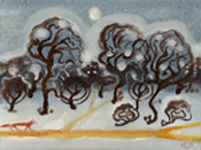
Наталия Юрьевна Пономарева родилась в 1957 в Калинине (Твери), с 1963 по 1968 жила в Париже, так как отец был корреспондентом ТАСС. В 1969 году он разбился в автокатастрофе в Республике Конго. После 9 класса поступила в Абрамцевское художественно-промышленное училище, где проучилась 1,5 года, затем перевелась в Калининское художественное училище им. А. Г. Венецианова (ныне — Тверское). Параллельно работала художником-оформителем в Калининском (ныне Тверском) Театре кукол.
Жемчужина деревянной архитектуры русского севера
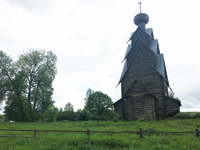
Жемчужиной русского деревянного зодчества, уникальнейшим памятником древнерусской архитектуры называют Храм Рождества Иоанна Предтечи в Ширково, и этому есть все основания. Можно представить, что в ХVII веке ярусный тип храма, блестящий образец которого мы видим в Ширкове, был довольно распространён в Верхневолжье, некоторые исследователи считают что храмов подобного типа было достаточно много, но тем не менее, только о существовании всего трёх церквей подобного типа говорят дошедшие до нас изображения, и только одна из них сохранилась.
Первая народная галерея в Льялово
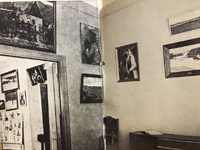
6 февраля 1958 года в подмосковном селе Льялово рядом с известной усадьбой Морозова, которую в 1921 году посещал В. Ленин, а в 1947 проектировалась Сталинская дача, в торжественной обстановке открылась Первая сельская художественная галерея. Этому предшествовала выставка 25 июня 1957 года, организованная руководителем местного клуба, Анатолием Андреевичем Глебовым. Клуб в то время располагался в сельской церкви — Храме Рождества Пресвятой Богородицы (с 1992 г. возвращен Церкви).
Online auction - a practical instruction. How to take part?

On the past few years, online auctions have become one of the most popular ways to buy collectibles on the art market. There are obvious pros and cons to this way of acquiring artwork. Among the first, there is no need to be physically present at the auction (after all, plans for the day of the auction can change unexpectedly: traffic, weather, illness - everything can prevent you from attending the event), the starting prices for lots are lower, among the minuses - the lack of the opportunity to watch the work in person and the very atmosphere of struggle, which is an integral part of trading in the hall. Nevertheless, the struggle, and sometimes exciting, often unfolds on your computer screen - and yes, this is another plus of the online auction. To participate, you only need any of your usual gadgets: a laptop, smartphone, tablet with Internet access, and you yourself can be anywhere.
История русской анимации и коллекционирование «истории» мультипликационных фильмов
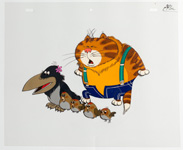
Не секрет, что современные мультипликационные фильмы создаются, в основном, с помощью компьютерных технологий, которые, как правило, имитируют те техники, которые уже существовали раньше. А традиционных техник в мультипликации достаточно много: рисованная, кукольная, техника перекладки, техника плоской марионетки, пластилиновая, техника сыпучих материалов.
История в гравюрах и литографиях уникального печатного издания «Революционная Москва: Третьему конгрессу Коммунистического Интернационала». 1921

Коминтерн ( Коммунистический Интернационал или III Интернационал) — международная организация , объединявшая коммунистические различных стран, был основан 2 марта 1919 года по инициативе РКП (б) и её руководителя В. И. Ленина для развития и распространения идей революционного интернационального социализма — «союз рабочих всего мира, стремящихся к установлению Советской власти во всех странах».
Painting as a Gift

“Painting as a gift” - that’s what we called the new section of our site, because lately more and more people are looking for something special as a gift, something that not only describes the donor as an interesting and non-standard person, but also leaves memory about him/ her for many years.
What happened to frescoes of Kievskaya Metro Station?
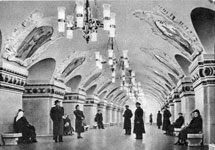
Утром 2 октября 2010 года почти полностью обрушилась фреска «Народное гуляние в Киеве» (около 10 кв.м) в западном торце станции метро «Киевская» Арбатско-Покровской линии: грунтовые воды размыли металлоконструкции, и влага сильно повредила панно. Масштабные работы по его восстановлению велись с 2012 года и завершились 14 июня 2013 года. Реставрация проводилась художниками-реставраторами ООО «Творческие мастерские «Китеж» М. Симагиным и В. Ивановым. Позже ими же были отреставрированы все 24 живописных панно, украшающих станцию «Киевская». Планировалось «очистить (панно) от грязи, укрепить основание грунта фресок и их красочного слоя, заделать трещины, а также воссоздать утраченные фрагменты композиций и лепного декора».
Art and Children: what do the scientists say?
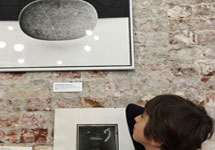
When we go to museum we don’t really think “why?”. This is our inner unconscious desire: for someone the emotional part is more important, someone wants to receive aesthetic pleasure, while others expand the boundaries of the world outlook and its perception. But adults don’t think before they buy tickets to this or that exhibition – they just do and it seems that their desire to be closer to “something beautiful” was inherent in them from the very beginning.
Everyone knows that many of the necessary skills are laid down from childhood, it is not a secret. When you are a child it’s easier to learn how to bike, to remember the dance band or to express yourself on the piece of paper. The perception of the entire world is completely different: pure, the child is open to anything new without extra fears.
The story of One Family in graphic art by Boris Bespalko. Kononenko Family
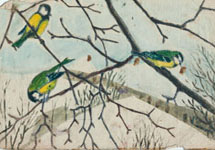
The story of any country consists not only from events which we study at school and university or hear from the news. The history is formed from the cultural heritage, memories, photos and documents which were left by previous generations, and the most important, from human destinies. Sometimes even the story of the life of one family can tell what is left behind the pages of the textbook.
The head of Kononenko family was Alexandr Alexandrovich Kononenko, the last director of gymnasium in Novgorod-Seversk and the director of 7-years school. Alexander Alexandrovich was a respected citizen and the whole county knew him. His familly was big: his mother, wife, three children, three brothers and six sisters. Ther family was intelligent, close-knit, friendly; love and support always were priorities there. Almost all girls could finish the female gymnasium and had the right to be teachers in junior classes: in the diplomas it was written “the daughter of a nobleman”.
Theater artist Tamara Guseva. Devoted to the 100-th Anniversary
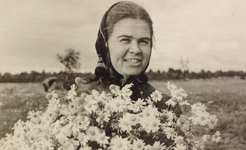
When we go to the theater to enjoy the play we barely think about details: light, scenery, costumes, soundtracks. We base our opinion on our general perception where the conclusion is either we liked it or not. But any performance is a complex of professional’s work whose intentions are creating for the viewer an ideal picture of what is happening on the scene, without distraction from the very essence of the play.
One of these professional who created this “theatrical magic” was the artist Tamara Guseva. In 1945 Tamara Guseva entered the art department of the All-Union State Institute of Cinematography, where she studied under outstanding masters, such as Yuri Pimenov, Fedor Bogorodskiy, Gregory Schegal and many others. After graduating the institute, she became a theater designer. Tamara Guseva designed several dozens of plays by Russian, Soviet and foreign playwrights in Moscow and in many other Russian cities.
Life in Art. Paintings at your home and office
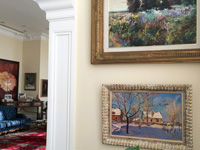
What is the fundamental difference between contemporary and bygone-era approach to interior decoration? Today’s city dweller pays a lot of attention to the functional value of his space while striving to make it look attractive and comfortable. Nevertheless, the dominating feature of modern approach is its distinction between the useful and useless, the functional and decorative, the necessary and unnecessary. A well-off house owner of the Renaissance would hardly be able to take it in. In his understanding a perfect living space was to combine architectural, functional 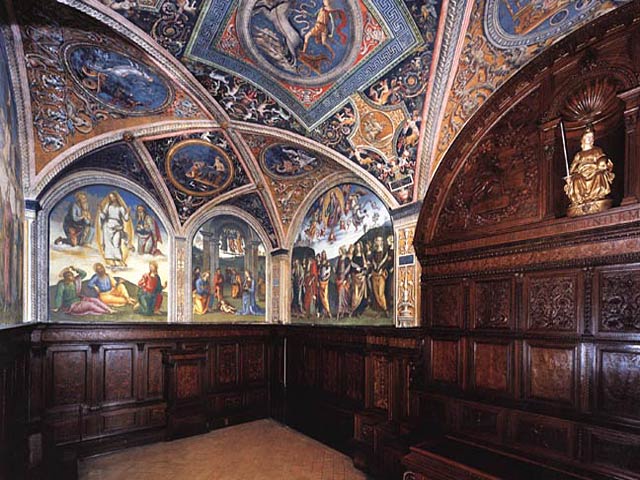 and decorative value. Artworks used to be an inseparable part of that equation to demonstrate not only the owner’s individuality but also to mark his social status, emphasize his wealth, versatile interests and taste or the absence of such. All those things served one purpose only – to turn a man’s life into an artwork, to make it as integral as possible, not to miss a single element be it homeware, sculpture, a piece of art or an exquisite furniture item.
and decorative value. Artworks used to be an inseparable part of that equation to demonstrate not only the owner’s individuality but also to mark his social status, emphasize his wealth, versatile interests and taste or the absence of such. All those things served one purpose only – to turn a man’s life into an artwork, to make it as integral as possible, not to miss a single element be it homeware, sculpture, a piece of art or an exquisite furniture item.
Tips on interior design & decoration

Interior design usually puts artworks off to the not quite honorary last place. The thought of wall decoration and creation of authentic atmosphere comes only after the last coat of paint has dried up and the furniture is all in its place.
The door to Multidimensionality: Still Lifes by Tatyana and Maria Ivanovs
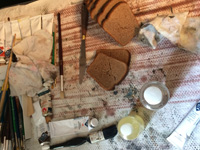
The genre of still life has long moved beyond its original, purely decorative, function. «Animate» and «inanimate» objects are tightly connected in this art striving to express the subtle nuances of human emotions, the spirit of the time and the complex inner life of the creator.
Tatyana and Maria Ivanovs represent a bright family tradition which goes back to Victor Ivanovich Ivanov,
Captured by Color. The art of Svetlana Atakhanova

The art of Svetlana Atakhanova is a combination of oriental flair and exquisite technique. Her paintings evoke associations with the art of rug-weaving which reflects subtle spirit of the East, its in-depth philosophy and ancient legacy. Svetlana was born in Kirghizia and her creative activity is tightly connected with Tajikistan, motherland of her husband, the well-known artist Azam Atakhanov.
Dynasty. The family of the Finogenov-Stekolschikov
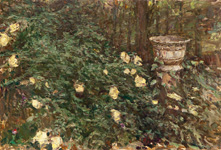
Artistic dynasty is a special space where creativity of each single member develops according to specific unspoken laws passed on nonverbally but on a deeper subconscious level. It imposes certain restrictions: each new generation feels the pressure of the legacy and, at the same time, has to not only justify the family tradition but to seek their own unique place for individual activity.
Animation Movie Sketches by Natalia Varlamova
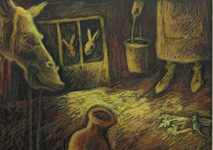
Natalia Varlamova’s graphic artworks are a special universe filled with the spirit of magic, so characteristic of the animation movies. Here every stroke turns into a symbol and every sign provokes a flow of associations. The artist transmits her perception of the world through mighty images which, in her interpretation, acquire archetypal features.
The Art of Book Illustration. Glimpses of the genre development in Russia
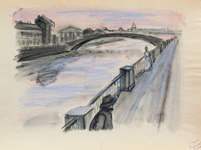
One of the amazing attributes of book illustration is the variety of genres it can be used for while being formally limited in format. Artists all over the world throughout the time have found inspiration in fiction starting from ancient mythology to Vergil, Shakespeare and Dostoevsky, trying to express eternal themes in art, frescoes, tapestry and mural paintings.
12, Kuznetsky Most: The Story of a House

Kuznetsky Most (Blacksmith’s Bridge) got its name from the settlement of blacksmiths which was set up in the era of Ivan III who founded Pushechny dvor (Cannon yard) on the Neglinka river. The bridge that gave the name to the street was first made of wood which was later replaced with white stone, but at the start of the 19th century the river was put into a pipe, the bridge was covered with soil, the railing was dismantled, and only the name remained.
The art of Photography in Russia: origins and development

For a long time, the practical concept of photography was an obstacle for it to take its rightful position among the recognized art types. One of the first works unanimously attributed to art and not to the mechanical reproduction of reality could be the photo montage by England’s photographer Oscar Rejlander "The two ways of life" (1856). It took Rejlander 32 photographic negatives, 20 models and six weeks of work to implement his major project. Just like many before him, the art connoisseur and experienced painter Rejlander strived for conveying artistic ways with the help of the camera. Until the beginning of the 20th century photography was tightly connected with art,
Quarta Gallery's artists in the context of the history of contemporary Russian art

Despite the simplicity of the term Modern Art, it includes an enormous amount of various directions and dates back to the 1950s-60s. Regardless of its pioneer ambitions, the search of new forms and avant-garde features, it is nevertheless deeply rooted in the legacy of the great artists of the 20th century, including Henri Matisse, Gauguin, Van Gogh, Cezanne, Georges Braque, Andre Derain and Pablo Picasso. At the start of the previous century Picasso makes his first conscious attempt to reduce the description of the live objects to three general shapes: cube, sphere and cone, thus forming the grounds for the analytical and synthetic cubism which later included the elements of collage in the artworks. Cubism preceded all the other styles of the 20th century, from abstractionism, orphism and suprematism to constructivism,
Swimming Pool "Moskva". History in the art
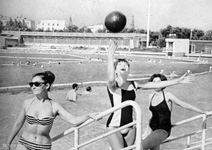
In the 1960s the artist N. Vorobeva made a series of etudes of the Swimming Pool "Moskva", which amazing story we present in this article.
The construction of the swimming-pool instead of the Christ the Savior Cathedral knocked down in the 30s started in 1958 and in 1960 the pool received its first visitors. The new sports structure quickly became a favorite spot for the Muscovites where they could rest and do sports. The swimming
Meeting with the Master
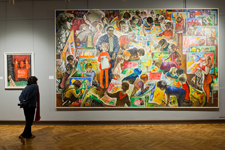
About the trip to the exhibition of the artist Mai Dantsig, which was held in the National Museum of Belarus in Minsk in Autumn 2015 devoted to the 85th anniversary of the Master.
The visit to the jubilee exhibition of the People’s Artist of Belorussia May Dantsig at the National Museum of Fine Arts of the Republic of Belarus had been on our schedule since the moment we learnt
History of Engraving
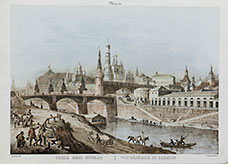
The engraving appeared in Europe during early Renaissance as a cross between various trades and fine arts: the production of printed fabrics gave a start to the woodprint, copperplate print is directly linked to jewelry and the eau forte has a lot in common with gunnery. The peculiarity of the engraving is in its mass production аs well as in its style linked to the work with hard materials. The more the engraving and lithography spread, the thinner became the borders between cultures and different art
